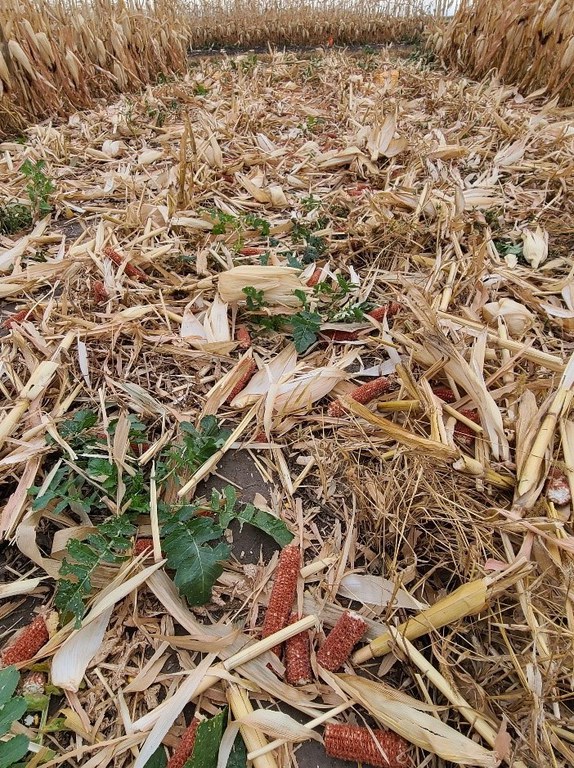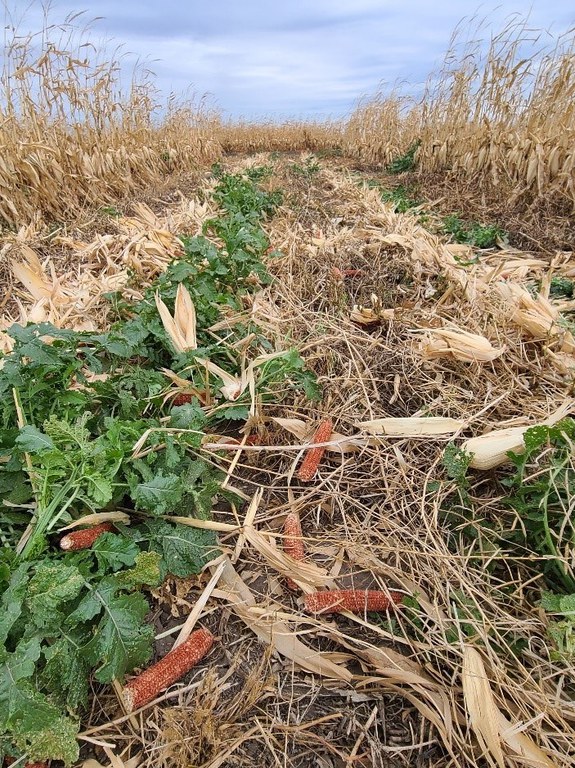A Sneak Peek at 2020 Wide Row Corn Results
In 2020 many growers and researchers were awakened to the concept of growing corn on a wider row spacing (often called 60” corn). This is counterintuitive to the trend of narrowing rows for maximum yields. So what is the fuss about?
The goal of this system is to maximize the harvest of light on each plant. The wider rows create alleys where direct sunlight can still hit the bottom corn leaves (and a cover crop). The reason for switching to this system varies, but most often involve incorporating cover crops. In North Dakota, a mid-season cover crop planting into corn suddenly becomes the most realistic way to get cover crops into a crop rotation, due to dry conditions and time constraints in the fall during traditional cover crop planting windows. There are many benefits to cover crops in a system, but this cropping system seems especially favorable to livestock integration.
This past year we were able to experiment with the practice at the CREC and Oakes Irrigation Research Site. The goal of our study was to evaluate corn yields at different row spacings (60” vs 30”), plant populations, and row orientations (north-south vs east-west). Here is a snapshot of what we are seeing:
- We were expecting big differences in yield and cover crop growth between north-south and east-west rows, but that didn’t happen. Overall our conditions were quite dry and limited both cover crop establishment and corn yields. The moisture shortage likely limited the differences between row orientations.
- As expected, cover crop were established at a much higher rate with wide rows compared to narrow rows. With wide rows, there was roughly 40% of the expected cover crop stand, whereas with 30” rows only 14% of expected covers grew. Higher corn populations reduced cover crop stand at both row spacings.
- At equal populations (32k/a), the 60” rows yielded 5-7% less than the 30” rows. With wide rows, reducing plant population to 24k reduced corn yields by over 10%, and 16k reduced corn yields by another 10%. The same patterns existed for both row orientations.
- Cob length was not affected by any of the treatments, but the number of kernel rows increased by 2 in the wide row treatments. Plant height was not affected by any treatment.

Cover crops from 30" rows

Cover crops from 60" rows
Stay tuned for more information about wide row corn! There is a lot to learn as we find out what did and did not work with our regions’ farmers in 2020.
Mike Ostlie, Ph.D.
Mike.Ostlie@ndsu.edu
Research Agronomist


